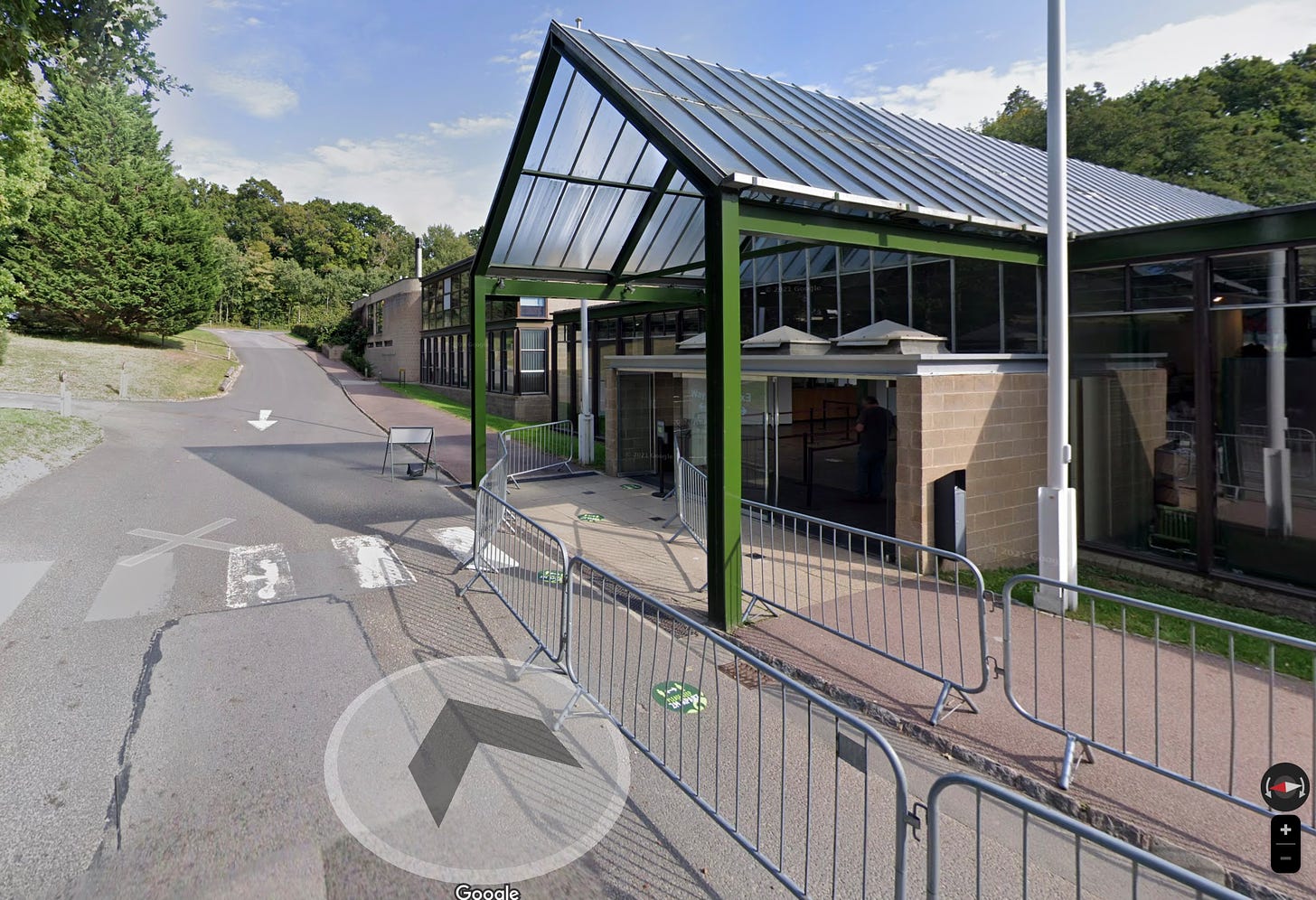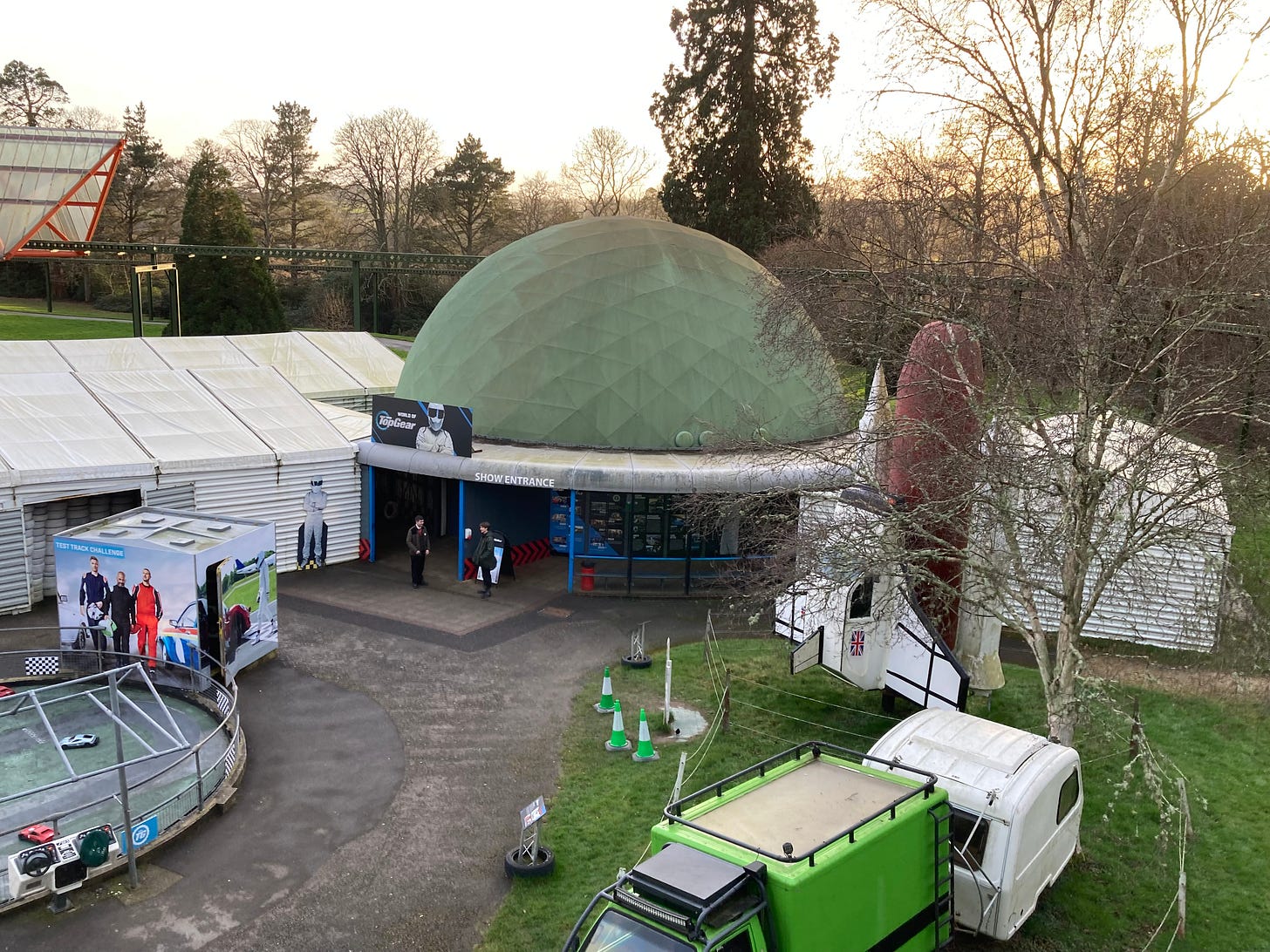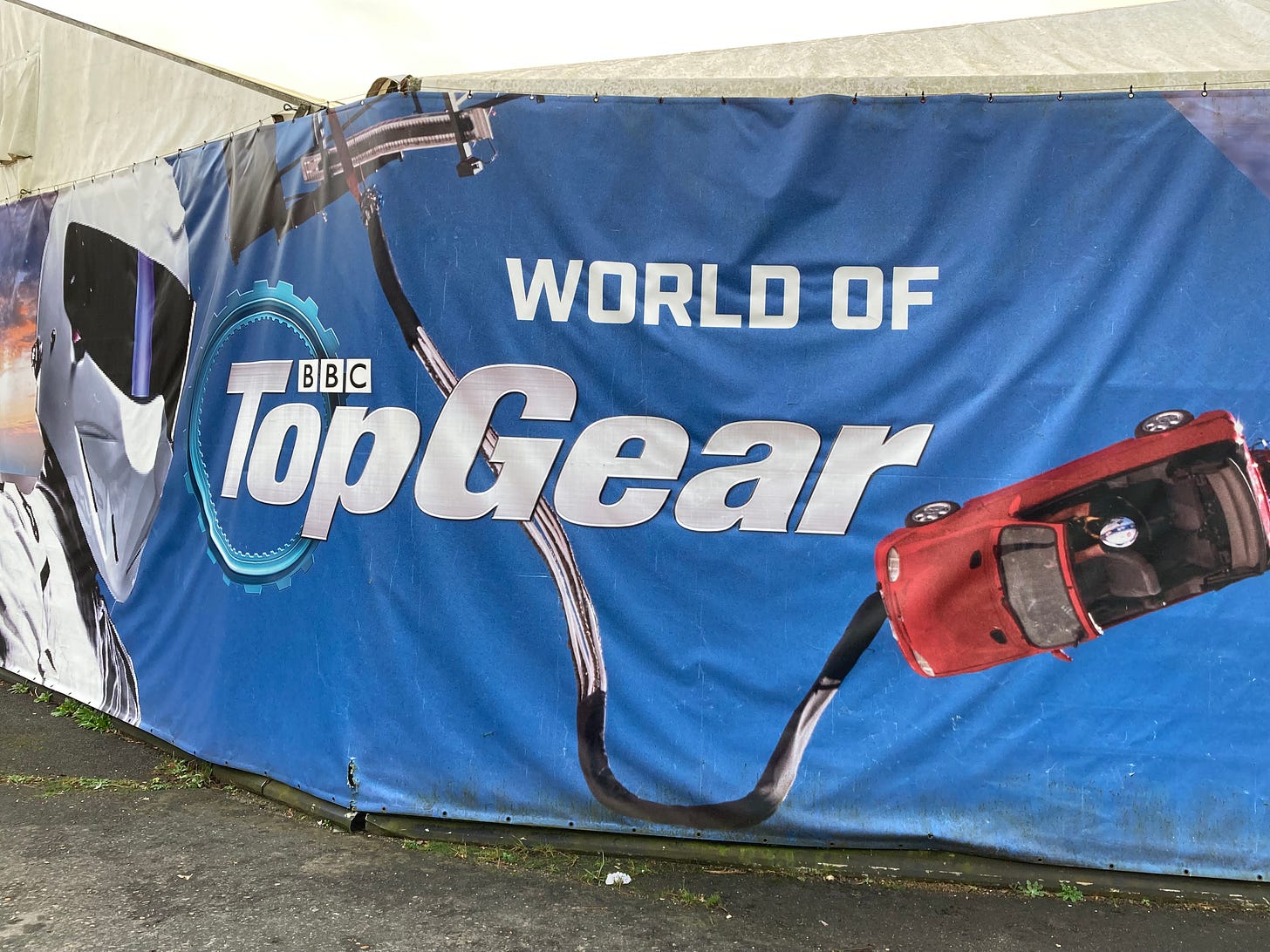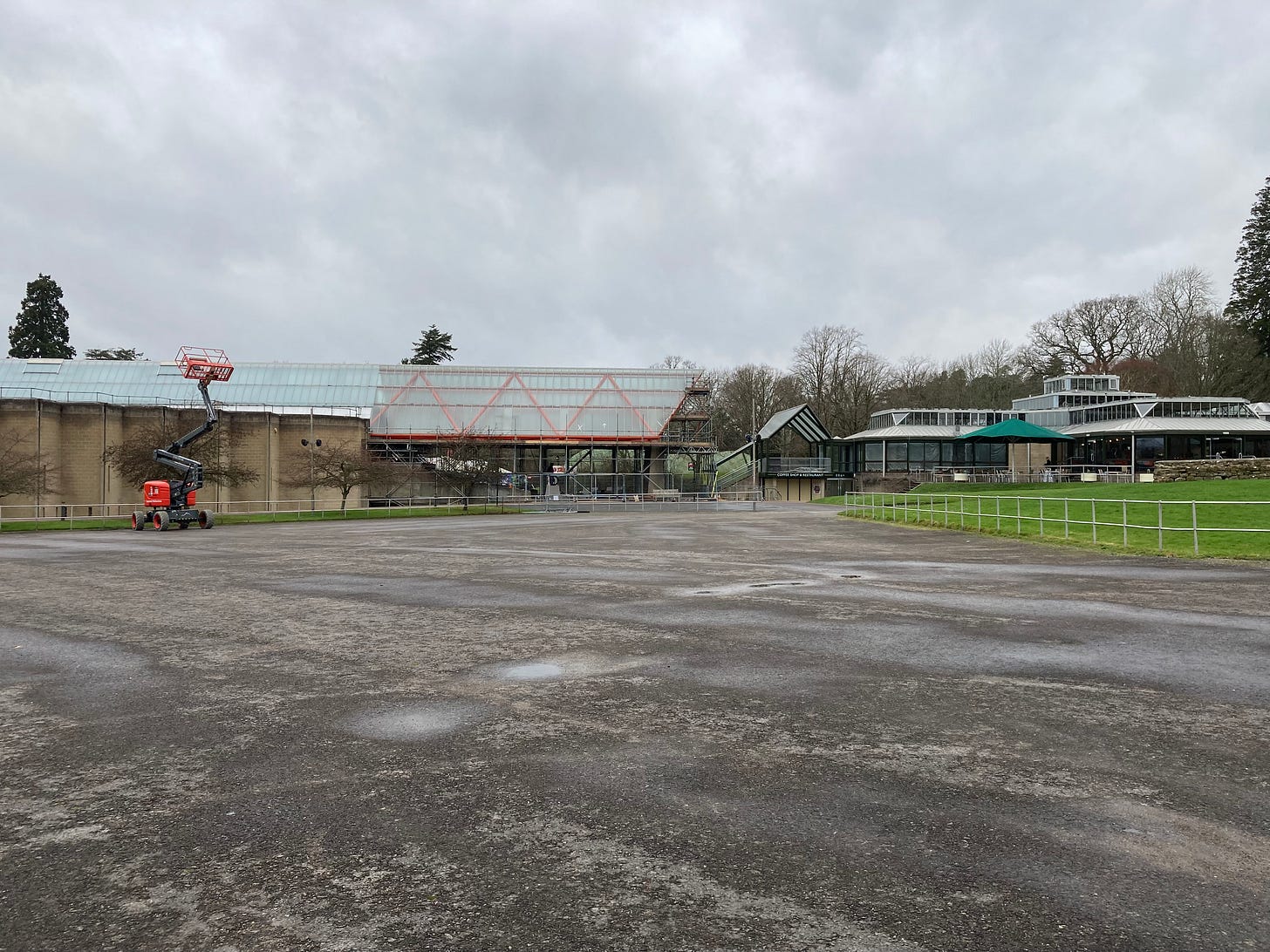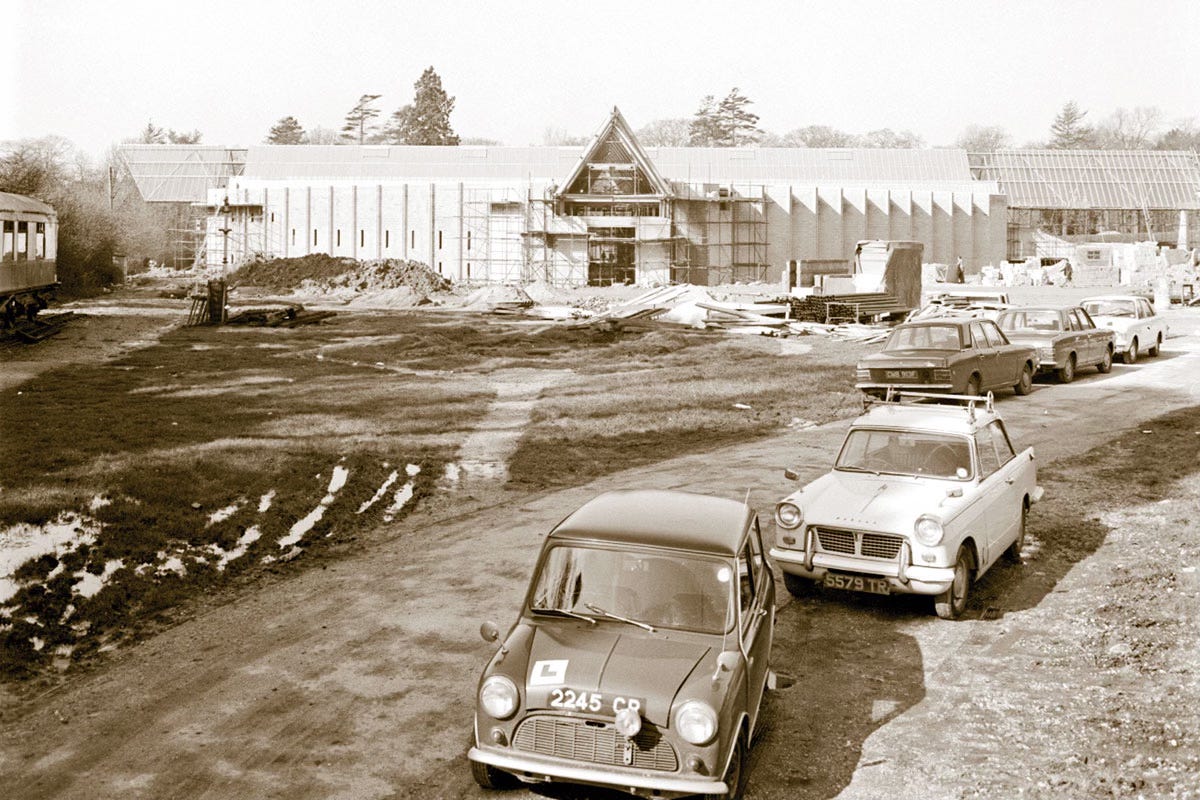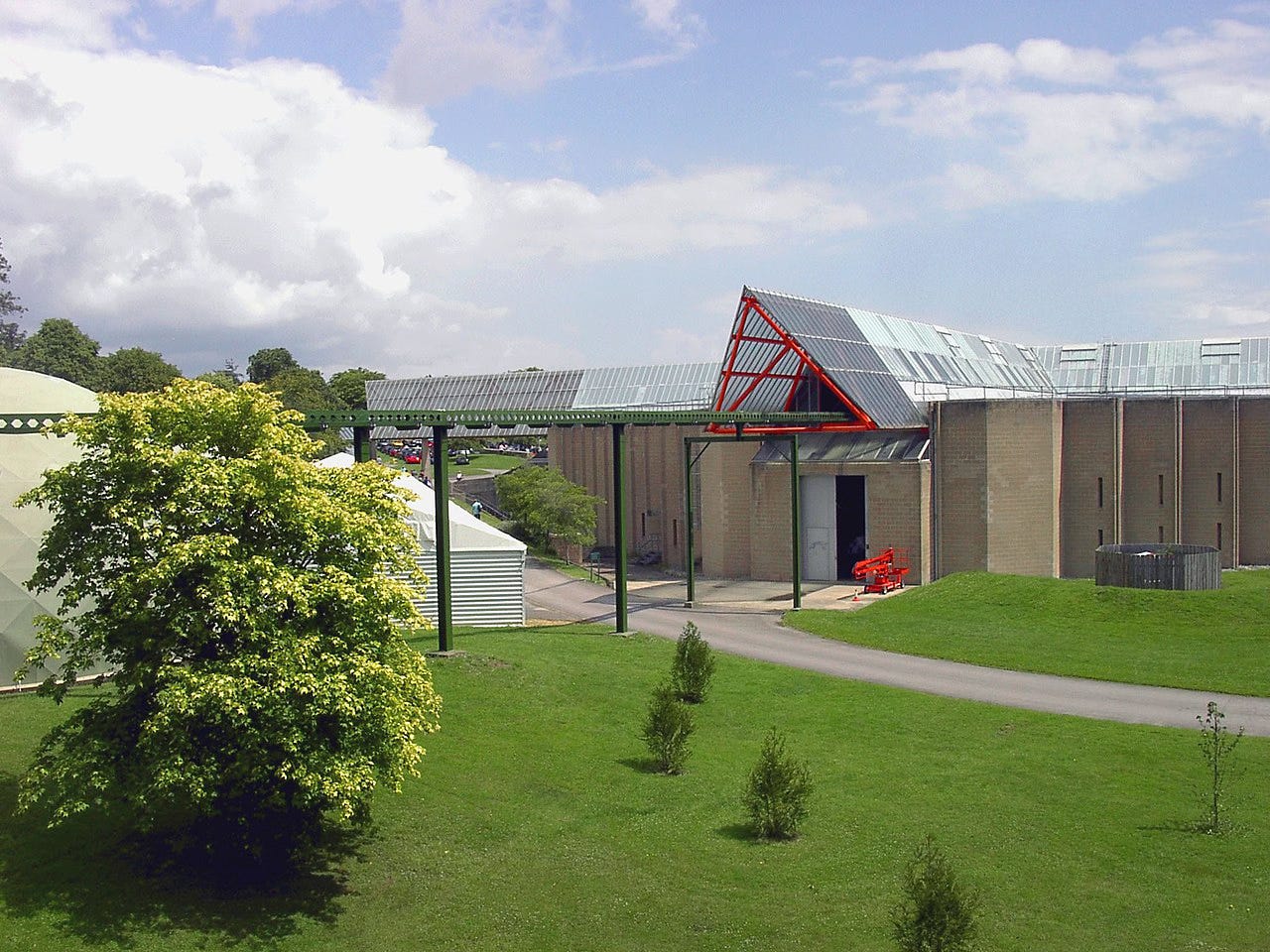I’d never been to Beaulieu before, but it’s selling itself online as one of the Treasure Houses of England. “Explore ten of the most magnificent palaces, houses and castles in England,” says the website.
So our hopes were high. But I’ll give you the spoiler now, there is nothing about Beaulieu which remotely constitutes a treasure house. This becomes pretty clear as soon as you get to the entrance. In fact the whole thing is so un-prepossessing that I didn’t even think to photograph it at the time and have had to borrow a picture from Google Maps, because no one else wants to remember it either.
The architectural situation isn’t much better on the other side of the ticket gates either.
There also appears to be some kind of parade ground.
The Offspring Militant, who is starting to think about further education, names this The University of Top Gear, and she’s not wrong. Like so many campus universities, all these buildings were designed in the early 1970s, and in that date is a clue.
The architecture at Beaulieu stems from the twenty years since the Second World War, a time when almost every stately home owner believed that their estate had no realistic future in the modern world and that they’d have to find a way of making it attractive. In some places like Woburn and Longleat the answer was lions, at Beaulieu it was cars.
This began as a few early vehicles set up in the hallway of the house and ended up with the vast building project of the National Motor Museum.
This is what we’ve been greeted with at the entrance; not just the museum but a range of its service buildings too.
I do have to admit that the museum is actually very good. As someone who was brought up by a car obsessive, I probably have a greater tolerance for staring at them than most people, but there is plenty more here, including a whole collection of Shell posters and advertising, along with the chance to see John Betjeman’s Discovering Britain films for the company and a frankly mad piece of very modern animation by Len Lye from the 1930s. There’s also an excellent and evocative reconstructed garage, evoking the days when a tin shed had moved on from being a blacksmith to selling petrol and fixing cars, bicycles and lawnmowers. And there’s this. What’s not to like?
There’s also a separate tent of cars from films and TV, along with the Top Gear Experience, which we chose not to experience.
But that’s not all, because the National Motor Museum is so modern that it has a monorail which goes through the roof of the building and out the other side.
The intention, as we chug along it and through the museum, is to take us into the future, as conceived of in the late 1960s. This is the white heat of technology, and not something which has much place for stately homes.
By this stage we have been at Beaulieu for a couple of hours and still have to go and visit the ruined Abbey (grey stone walls, standard English Heritage/Ministry of Works experience) and an exhibition about the undercover work of the Special Operations Executive spies who were trained at Beaulieu in the war. And we desperately need a cup of coffee. It’s a peculiar miscellany of stuff, and parts of it are quite entertaining. But none of this is a stately home, or indeed a Treasure House of any kind. The sideshow is now the main attraction.
It would be easy simply to file Beaulieu as an odd exception, a place which recreated itself as a major museum and attraction on the site of a stately home. Except that the questions that this place makes me ask - why have I come here and what am I looking at - are the same ones I find myself asking at any National Trust place such as Tyntesfield. We say that we are visiting grand houses and their treasure but when we get there, that’s not what we want to look at. The Montagus of Beaulieu know this. So do the National Trust, even if they are less willing to say it out loud.
What we find when we do eventually get to the end of the grounds and take a tour round Palace House is a story for next time.




